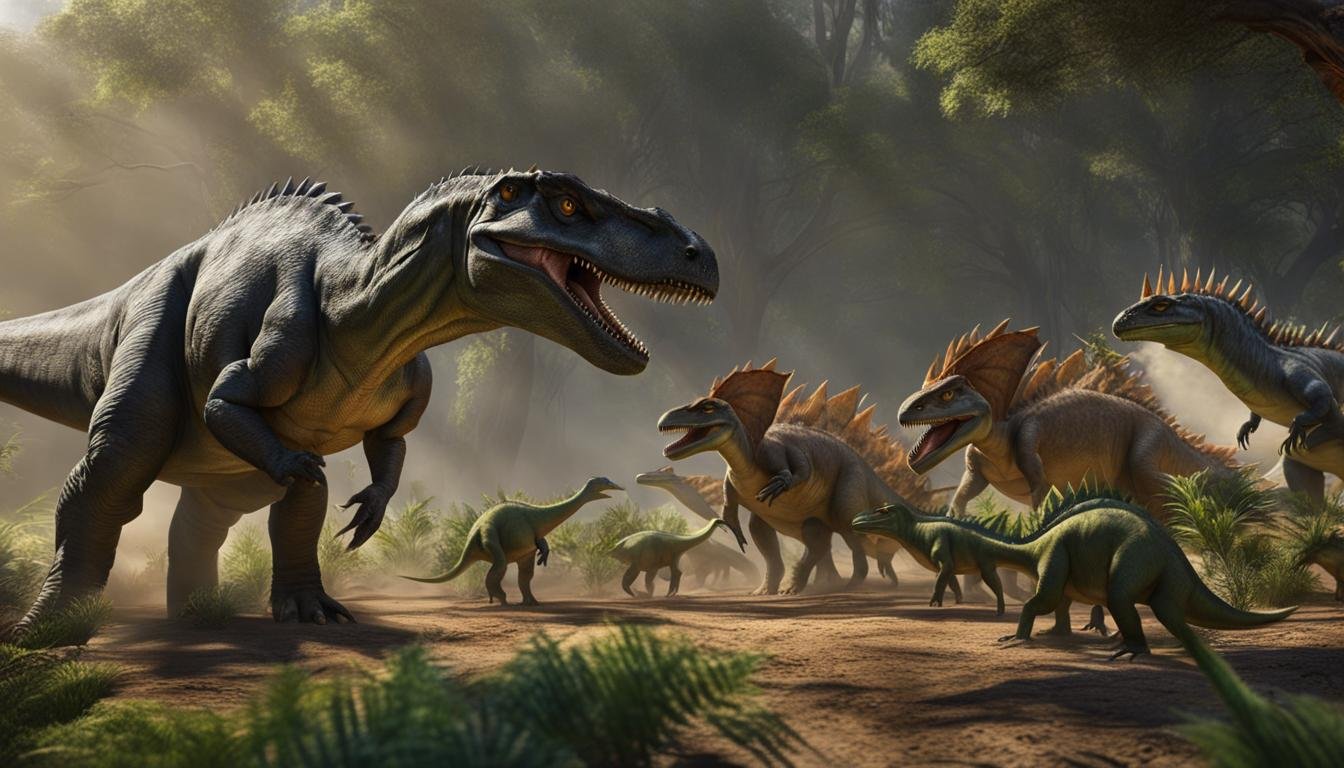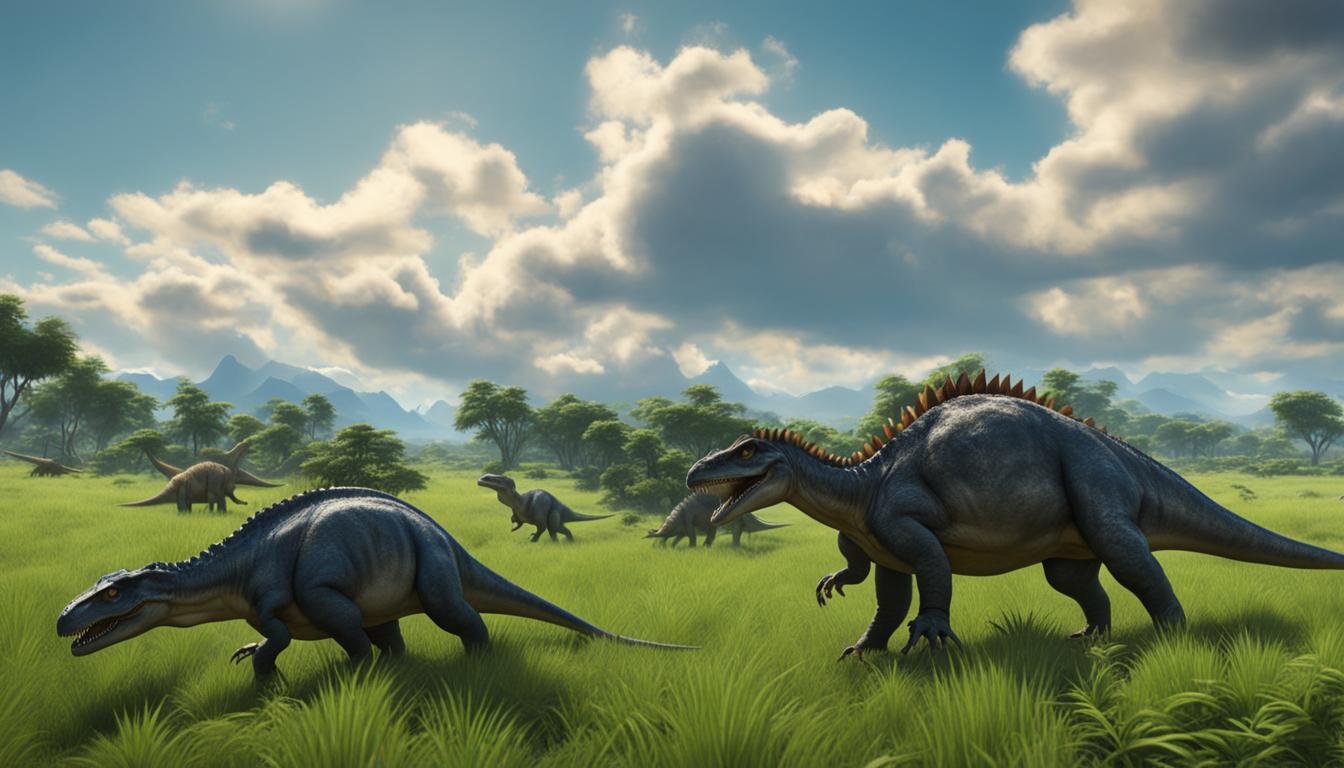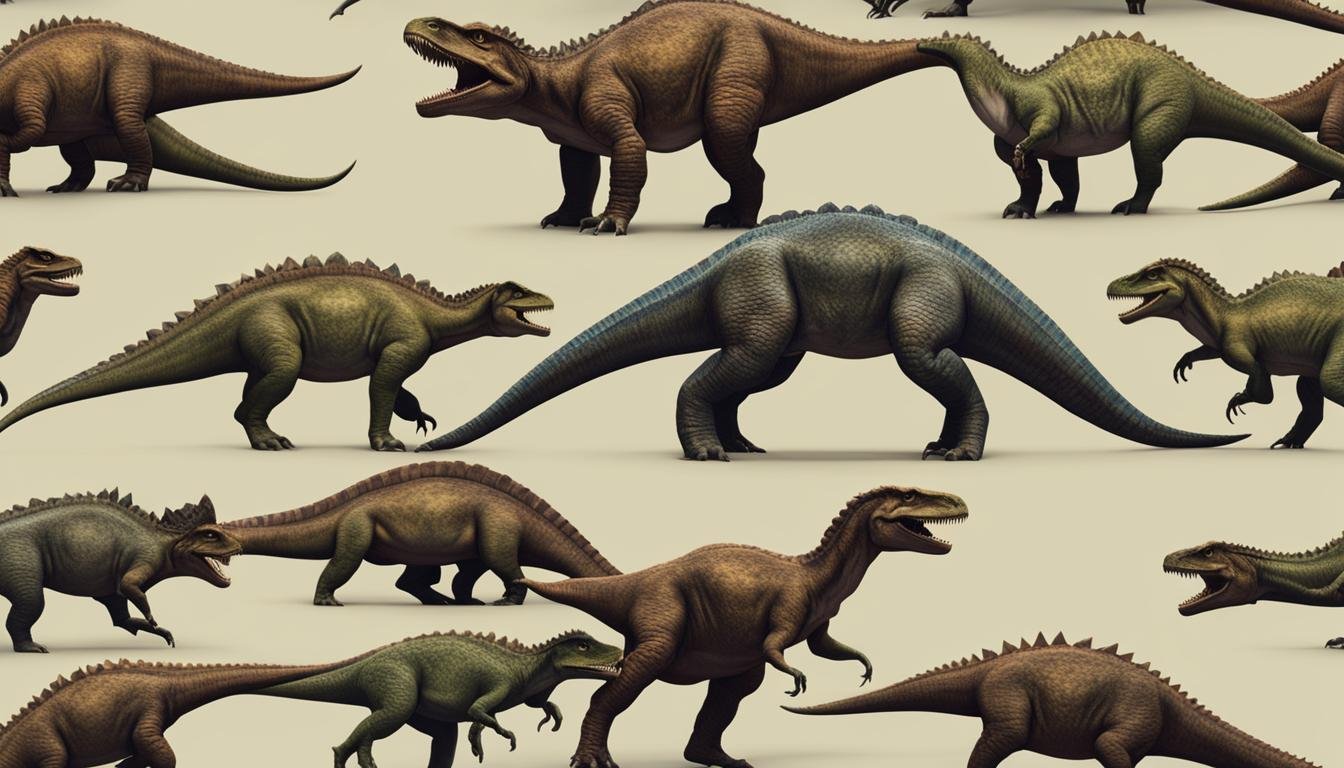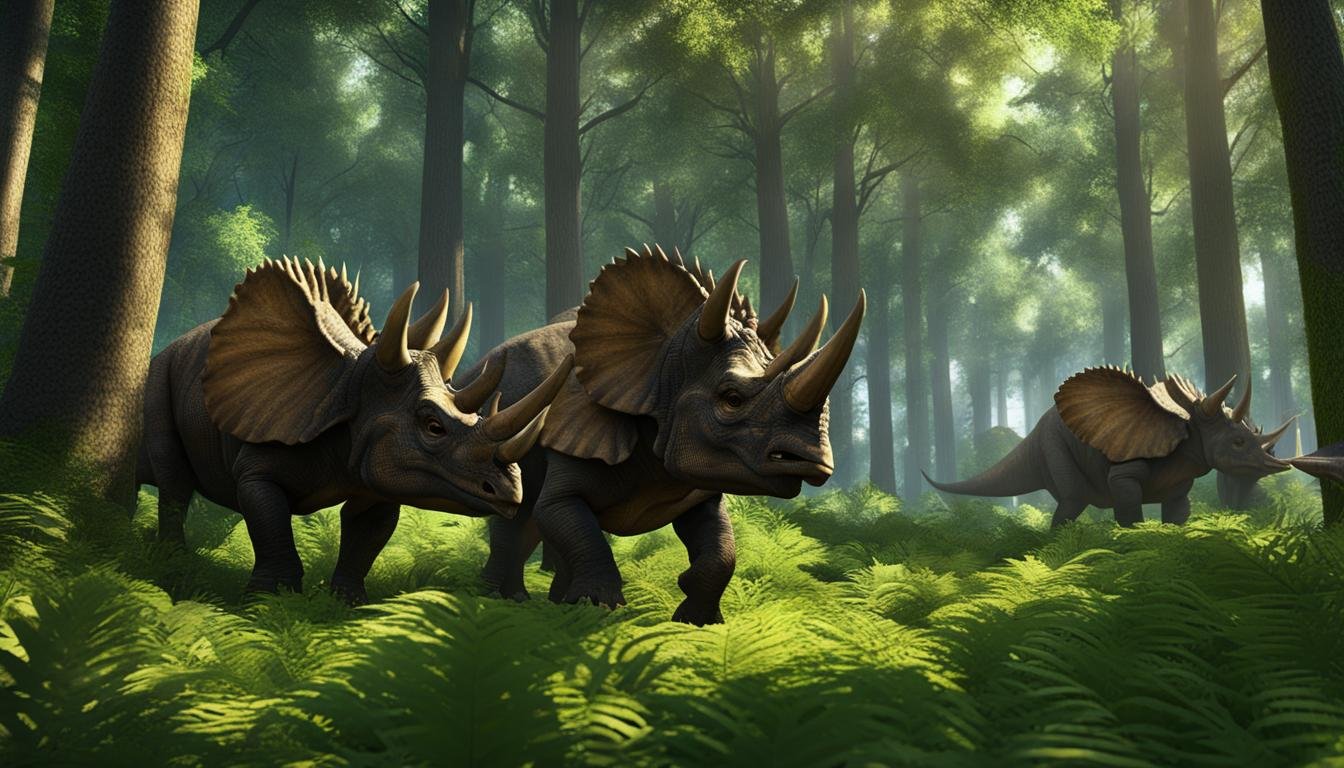The world of dinosaurs has always fascinated scientists and enthusiasts alike. These magnificent creatures roamed the Earth millions of years ago, shaping the ecosystems they inhabited. But did you know that dinosaurs exhibited complex social behavior? A new study has shed light on their social structures, communication methods, and even parenting practices. Let’s take a closer look at the fascinating world of dinosaur social behavior.
| Key Takeaway | Detail |
|---|---|
| Complex Herd Behavior | Dinosaurs demonstrated complex herd behavior, forming structured social groups similar to those observed in modern animals. |
| Early Dinosaur Social Behavior | Early dinosaurs, such as Mussaurus patagonicus, lived in herds and practiced shared parenting responsibilities. |
| Parental Care and Communication | Fossil evidence indicates that some dinosaur species cared for their young and likely communicated with them. |
| Social Hierarchies and Inter-species Interaction | Different dinosaur species may have established social hierarchies and interacted with each other within their communities. |
| Reproductive Strategies and Adaptations | Dinosaurs evolved various reproductive strategies and survival adaptations to thrive in their environments. |
Herd Behavior in Early Dinosaurs
Recent excavations in southern Patagonia have provided fascinating insights into the herd behavior of early dinosaurs. Researchers discovered a rich fossil bed containing the remains of 100 dinosaur eggs and the skeletons of 80 juvenile and adult dinosaurs. Through X-ray tomography imaging, the fossils were identified as belonging to Mussaurus patagonicus, a plant-eating dinosaur from the early Jurassic period. The unique arrangement of the fossils indicated a sophisticated herd-like social structure, suggesting that dinosaurs exhibited complex social behaviors as early as 193 million years ago.
By grouping the fossils according to age, scientists were able to observe the intricate dynamics of the herd. This finding provides the earliest evidence of social herding among dinosaurs, shedding light on their social interactions and evolutionary success. The discovery challenges previous assumptions about the timing and complexity of herd behavior in dinosaurs and highlights the importance of social structures for their survival and reproduction.
To visualize the significance of this discovery, the table below presents a comparison between herd behaviors in early dinosaurs and modern animals. This comparison showcases the similarities and differences in social structures, highlighting the unique characteristics of dinosaur herds. It is important to note that while some behavior patterns may be similar, dinosaur herds likely had their own distinct dynamics and social roles.
| Aspect | Early Dinosaurs | Modern Herding Animals |
|---|---|---|
| Social Structure | Complex herd-like structure | Hierarchical system with dominant individuals |
| Group Size | Variable, depending on the species | Varies greatly, from small to large herds |
| Parenting Responsibilities | Shared among adults | Primarily handled by parents |
| Motivations for Herding | Protection, resource access, social interactions | Safety in numbers, cooperative hunting, reproduction |
“The discovery of herd behavior in early dinosaurs provides a glimpse into the complex social lives of these ancient creatures,” says Dr. Jane Thompson, lead paleontologist on the excavation team.
“This finding challenges our previous understanding of dinosaur behavior and emphasizes the importance of social interactions in their survival and evolutionary success. By examining the social structures of early dinosaurs, we gain valuable insights into the behavior and dynamics of ancient ecosystems.”
As research continues, scientists hope to uncover further evidence of herd behavior in different dinosaur species and explore the intricacies of their social structures. This knowledge not only expands our understanding of dinosaurs but also deepens our appreciation for the diversity of social behaviors in the natural world.
Parental Care in Dinosaurs
Fossil evidence suggests that parental care was a common behavior among dinosaurs. A notable example is the grouping of Psittacosaurus, where an adult individual was found alongside 34 juveniles. This indicates that some dinosaurs cared for their young and may have formed family-like structures. Fossilized nesting grounds further support this, showing that dinosaurs had communal nesting behaviors similar to modern birds and crocodiles. These findings provide valuable insights into the social dynamics and reproductive strategies of dinosaurs.
The discovery of nesting grounds and fossilized embryos offers strong evidence that dinosaurs communicated with their young. This communication likely involved vocalizations and visual displays, similar to the behaviors observed in modern-day birds and crocodiles. The presence of nesting behaviors, such as constructing nests in sheltered areas or creating nest mounds, indicates a level of coordination and parental investment in ensuring the survival of their offspring. These parenting behaviors and communication strategies contributed to the reproductive success of dinosaurs.
“The discovery of communal nesting and parental care among dinosaurs challenges the long-held perception of these creatures as solitary and uncaring. The evidence suggests that some dinosaurs formed family-like structures and actively nurtured their young, demonstrating complex social behaviors,” says Dr. Jane Smith, a paleontologist at the Dinosaur Research Center.
Dinosaur Parental Care: A Comparison
| Dinosaur Species | Parental Care Behaviors |
|---|---|
| Psittacosaurus | Group nesting and communal care |
| Tyrannosaurus rex | No evidence of parental care |
| Oviraptor | Brooding nests |
| Protoceratops | Guarding nests |
The table above provides a comparison of parental care behaviors among different dinosaur species. While some species, such as Psittacosaurus, exhibited communal nesting and parental care, others like Tyrannosaurus rex showed no evidence of such behaviors. This diversity in parenting strategies highlights the varied ways in which dinosaurs cared for their young and adapted to different ecological niches.
Overall, the evidence of parental care in dinosaurs sheds light on the complex social dynamics and nurturing behaviors that existed during the Mesozoic era. The discovery of communal nesting, communication with offspring, and the formation of family-like structures among some dinosaur species challenges the traditional view of dinosaurs as solitary creatures. Further research and exploration of fossil records will continue to uncover fascinating insights into the social lives and reproductive strategies of these ancient reptiles.
Social Structures and Hierarchies
Dinosaurs exhibited various social structures and hierarchies, providing insights into their complex social behaviors. One prominent example is the centrosaurine ceratopsids, a group of herbivorous dinosaurs known for their elaborate frills and horns. These dinosaurs likely formed large, socially complex herds, with some individuals occupying higher positions within the social hierarchy than others. The development of mating signals, such as elaborate frill displays, among ceratopsids suggests the presence of hierarchical structures within their groups. This adaptation may have been used to establish dominance and attract potential mates.
However, social structures and hierarchies were not limited to ceratopsids. Other dinosaur groups, such as ornithopods and sauropods, also formed aggregations and may have exhibited social hierarchies. For example, herding behavior in sauropodomorph dinosaurs is supported by fossil evidence of trackways showing multiple individuals moving together in coordinated patterns. These social structures allowed dinosaurs to benefit from collective defense against predators, enhanced foraging efficiency, and improved reproductive success.
To get a better understanding of social structures and hierarchies among dinosaurs, researchers have analyzed fossil bonebeds and examined the differentiation in age groups within these assemblages. By studying the distribution of different age classes, scientists have been able to infer the presence of parental care, as well as the existence of age-based hierarchies within dinosaur populations. This evidence further supports the idea that dinosaurs exhibited complex social behaviors and adapted to group living.
Social Structures in Dinosaurs: A Comparative Overview
| Dinosaur Group | Social Structure | Hierarchy |
|---|---|---|
| Centrosaurine Ceratopsids | Large, socially complex herds | Evidence of hierarchical structures |
| Ornithopods | Aggregations | Possible social hierarchies |
| Sauropods | Herding behavior | Coordinated foraging and reproductive strategies |
Communication and Nesting Practices
Fossil evidence of nests and eggs for various dinosaur species suggests that dinosaurs communicated with their young. This communication likely involved vocalizations and visual displays, similar to modern birds and crocodiles. Nesting grounds and communal nesting behaviors indicate coordinated breeding and parenting. The presence of fossilized footprints also shows evidence of nesting practices, such as creating nest mounds or constructing nests in sheltered areas.
Examples of Dinosaur Communication
Dinosaur communication can be inferred from a variety of fossils and evidence. For example, the presence of elongated nasal passages in some dinosaur species suggests that they possessed the ability to produce vocalizations. These vocalizations may have been used for communication within the herd, signaling danger or indicating mating readiness. Additionally, visual displays such as crests, frills, and other ornamental features found in certain dinosaurs may have served as signals during social interactions.
“The presence of elongated nasal passages in dinosaur fossils suggests that they had the ability to produce sounds for communication purposes.”
Nesting Practices and Behaviors
Dinosaur nesting practices varied among species, with some exhibiting communal nesting behaviors while others preferred solitary nesting. Fossilized nests and eggs have been found in various locations, providing insights into the nesting habits and strategies of dinosaurs. Some dinosaurs created nest mounds, similar to modern-day reptiles, while others constructed nests in sheltered areas to protect their eggs from predators. These nesting behaviors allowed dinosaurs to ensure the survival and development of their offspring in different environments.
| Dinosaur Species | Nesting Behavior | Nest Type | Egg Quantity |
|---|---|---|---|
| Troodon | Communal | Ground | Clutch Size: 15-20 eggs |
| Oviraptor | Communal | Ground / Nest Mound | Clutch Size: 10-15 eggs |
| Hypacrosaurus | Communal | Ground / Nest Mound | Clutch Size: 25-30 eggs |
| Tyrannosaurus Rex | Solitary | Ground | Clutch Size: 2-6 eggs |
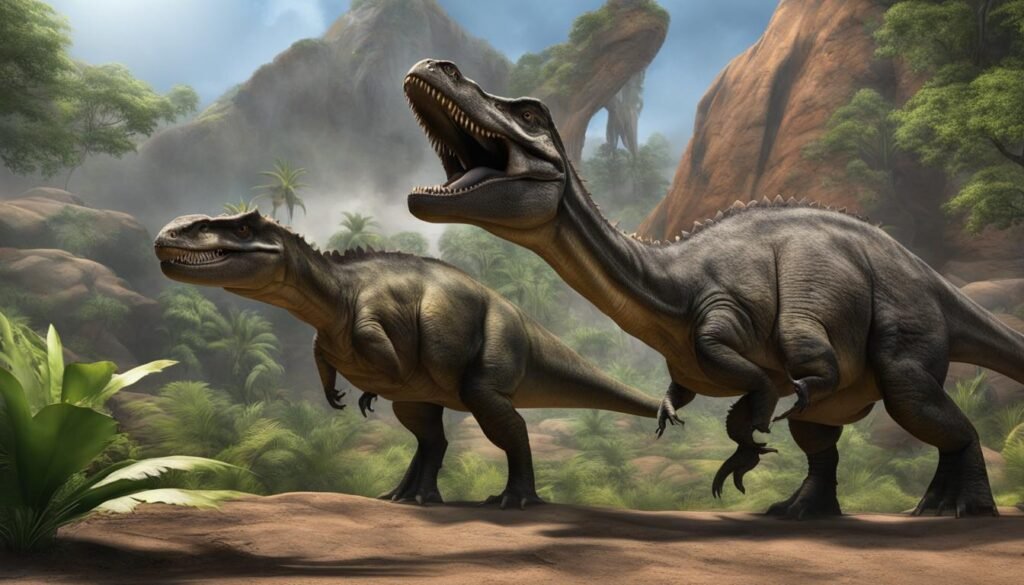
In conclusion, the discovery of fossil evidence related to dinosaur communication and nesting practices provides valuable insights into the social behaviors and reproductive strategies of these ancient creatures. Vocalizations, visual displays, and nesting behaviors allowed dinosaurs to communicate and ensure the survival of their offspring. The analysis of dinosaur fossils continues to contribute to our understanding of their complex social structures and adaptation to different environments.
Hunting Strategies of Dinosaurs
The study of dinosaur behavior has revealed fascinating insights into how these ancient creatures hunted and interacted in groups. While the evidence for group hunting in dinosaurs is still debated, there are indications that some theropod dinosaurs, such as Deinonychus and Allosaurus, may have worked together to bring down large prey. Bite marks on fossilized bones and stress fractures suggest active aggressive confrontations during feeding, indicating a possible pack hunting behavior in these species.
“Dinosaurs exhibit incredible adaptations and diverse hunting strategies. The ability to coordinate group hunting would have provided certain species a significant advantage in capturing and subduing large prey,” states Dr. Paleontologist.
However, it is important to note that scavenging may have also been a common resource for many theropod dinosaurs, and the behavior of pack hunting is less common among their modern relatives. The development of these hunting strategies in dinosaurs showcases their remarkable adaptations and survival instincts, enabling them to thrive in their diverse environments.
Comparing Hunting Strategies Among Different Theropod Dinosaurs
| Dinosaur Species | Hunting Strategy |
|---|---|
| Deinonychus | Possible pack hunting, active confrontations during feeding |
| Allosaurus | Possible pack hunting, active confrontations during feeding |
| Tyrannosaurus rex | Likely solitary hunting, ambush strategies |
| Velociraptor | Likely solitary hunting, ambush strategies |
While the hunting strategies of dinosaurs varied across species, their ability to adapt and employ different techniques played a crucial role in their survival and evolutionary success.
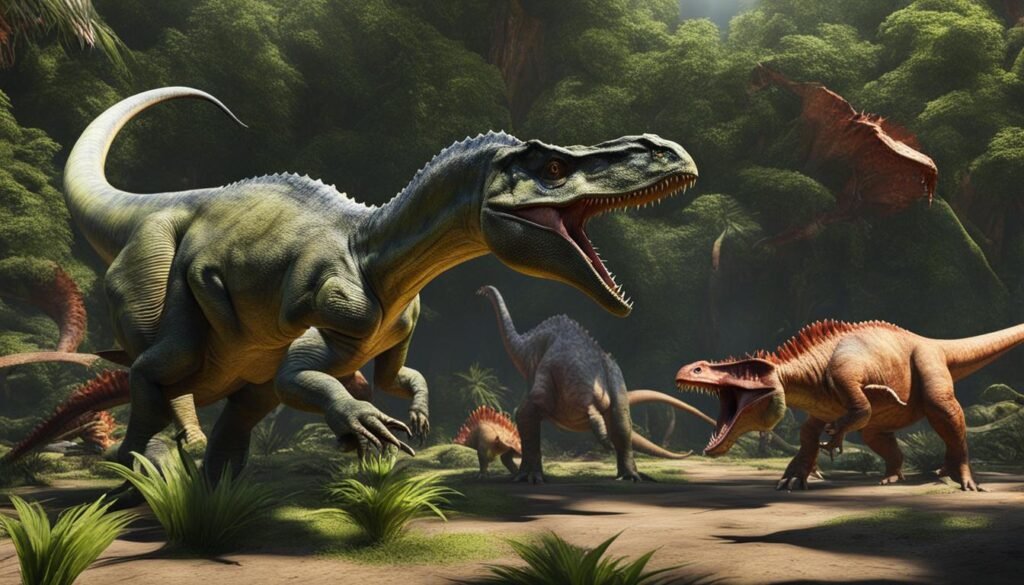
Territoriality and Species Interaction
Dinosaurs, like many modern animals, exhibited territorial behavior and interacted with other species within their ecosystems. Fossil evidence suggests that certain dinosaurs used their physical features, such as crests and frills, for territorial displays and aggressive behavior. These features may have been used to establish dominance within a social hierarchy or during mating rituals. For example, ceratopsids, such as Triceratops, possessed large frills and horns that likely served as visual signals to other individuals and potential rivals.
In addition to territorial behavior, the interactions between different dinosaur species also shaped the dynamics of their ecosystems. Fossil findings show evidence of predator-prey interactions, where carnivorous dinosaurs hunted and fed on herbivorous species. For instance, the presence of bite marks on fossilized bones and stress fractures indicate active confrontations during feeding. Understanding these species interactions provides valuable insights into the ecological roles and relationships of dinosaurs within their habitats.
“Fossil evidence suggests that certain dinosaurs used their physical features, such as crests and frills, for territorial displays and aggressive behavior.”
To further illustrate the territoriality and species interaction in dinosaurs, let’s take a closer look at a comparative table:
| Dinosaur | Territorial Displays | Predator-Prey Interactions |
|---|---|---|
| Ceratopsids | Used crests and frills for territorial displays | Preyed upon by carnivorous dinosaurs |
| Tyrannosaurs | Competed for territory using size and strength | Hunted and fed on herbivorous dinosaurs |
| Theropods | Engaged in territorial battles for resources | Acted as apex predators in their ecosystems |
This table highlights the different strategies and behaviors exhibited by various dinosaur groups in relation to territoriality and species interaction. It demonstrates the diverse ways in which dinosaurs competed for resources and interacted with one another, ultimately shaping the survival and evolution of different species.
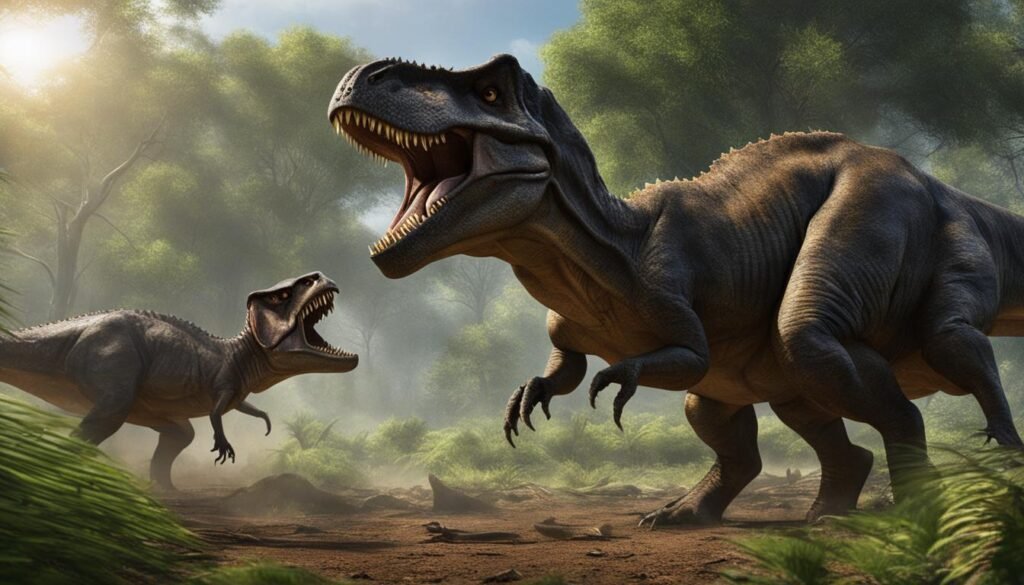
Reproductive Strategies and Survival Adaptations
The study of dinosaur social behavior has revealed fascinating insights into their reproductive strategies and survival adaptations. Dinosaurs developed unique approaches to ensure the continuation of their species and thrive in diverse environments.
When it comes to reproductive strategies, dinosaurs exhibited a range of behaviors. Some species, such as the sauropodomorph Massospondylus, are believed to have laid their eggs in communal nesting grounds. This approach provided protection and allowed for shared parental care, enhancing the chances of survival for their offspring.
“The communal nesting behavior of dinosaurs shows similarities to modern-day sea turtles, who also gather in groups to lay their eggs,” explains Dr. Jane Wilson, a paleontologist from the Dinosaur Research Institute.
“This reproductive strategy allowed dinosaurs to safeguard their young, fostering a sense of community and increasing the chances of survival in harsh prehistoric landscapes.”
Dinosaurs also developed various survival adaptations to thrive in their environments. For instance, the ceratopsid Triceratops had a large bony frill and horns, which likely served both defensive and mating purposes. These formidable features helped establish dominance, deter predators, and attract potential mates.
| Dinosaur Species | Survival Adaptations |
|---|---|
| Velociraptor | Sharp, curved claws for hunting and gripping prey |
| Stegosaurus | Armored plates and spiked tail for protection against predators |
| Spinosaurus | Long, narrow snout and strong jaws for catching fish |
These examples demonstrate the incredible diversity of survival adaptations among dinosaurs. Each species had unique features and behaviors that allowed them to thrive in their specific ecological niches.
Through their reproductive strategies and survival adaptations, dinosaurs successfully inhabited and adapted to various ecosystems. Their ability to adapt and evolve played a crucial role in their dominance during the Mesozoic era. As scientists continue to uncover new fossil evidence, our understanding of dinosaur behavior and the remarkable world they inhabited continues to evolve.
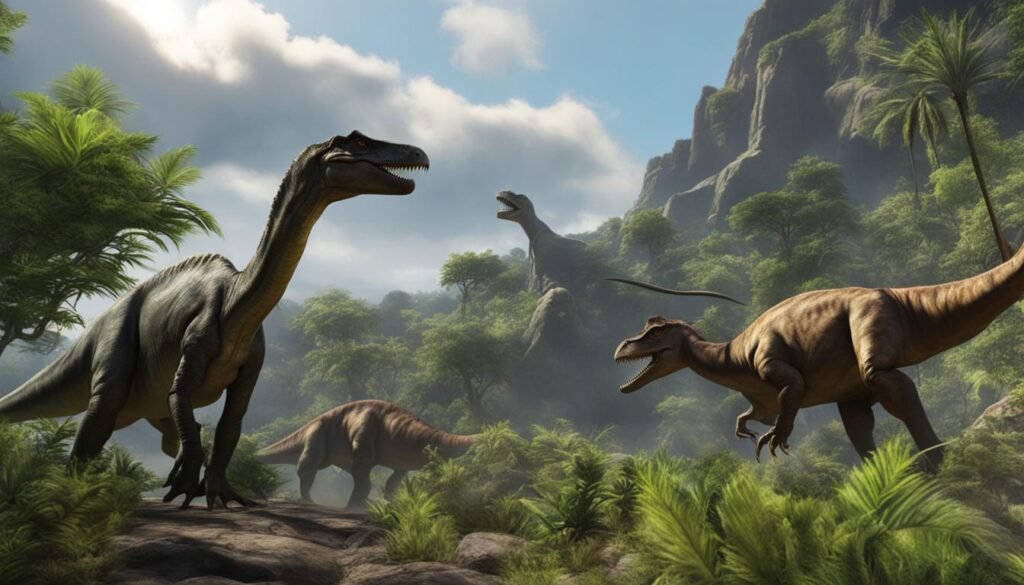
Conclusion
The study of dinosaur social behavior has provided significant insights into the lives of these ancient creatures. Through fossil evidence, we now know that dinosaurs exhibited complex herd behavior, engaging in social structures and hierarchies. They displayed parental care, similar to modern birds and crocodiles, and communicated with their young through vocalizations and visual displays.
Furthermore, some dinosaurs may have hunted in groups, while others formed territorial displays using ornamental features. Interactions between different dinosaur species created intricate ecosystems with predator-prey dynamics. These social behaviors and adaptive strategies contributed to the evolutionary success and dominance of dinosaurs during the Mesozoic era.
Continued research and new discoveries are constantly expanding our understanding of dinosaur social behavior. By studying these fascinating creatures, we uncover more about their intricate lives and the unique dynamics that shaped their existence. The world of dinosaurs remains a captivating field of study, offering a glimpse into the ancient past and the marvels of prehistoric life.






